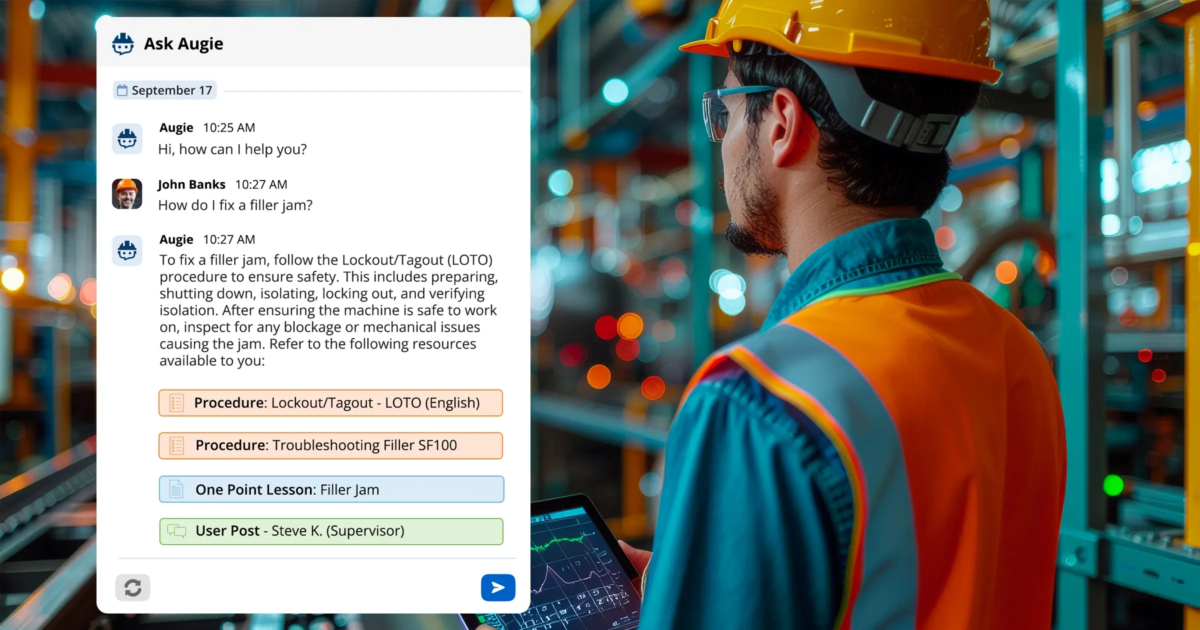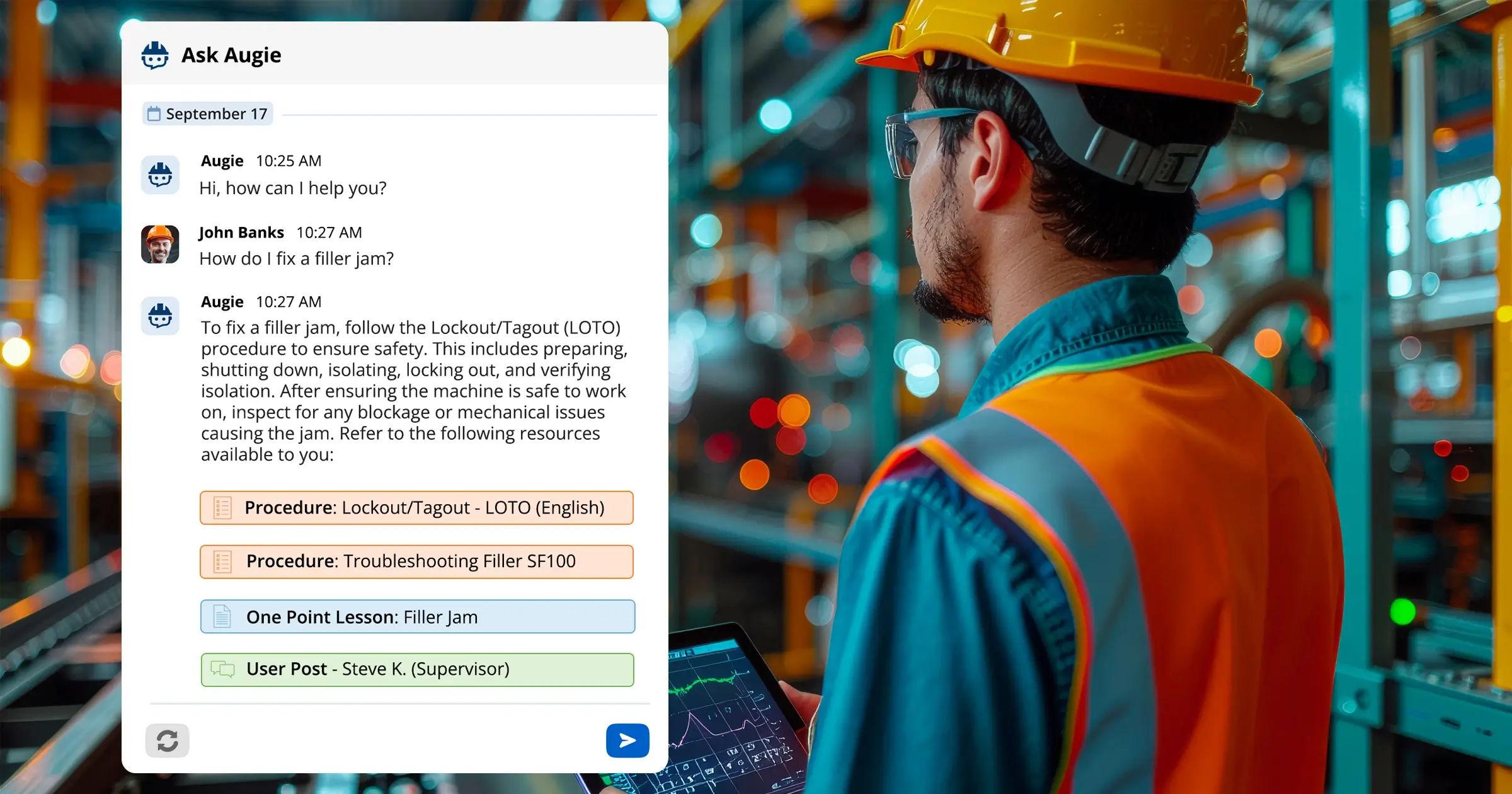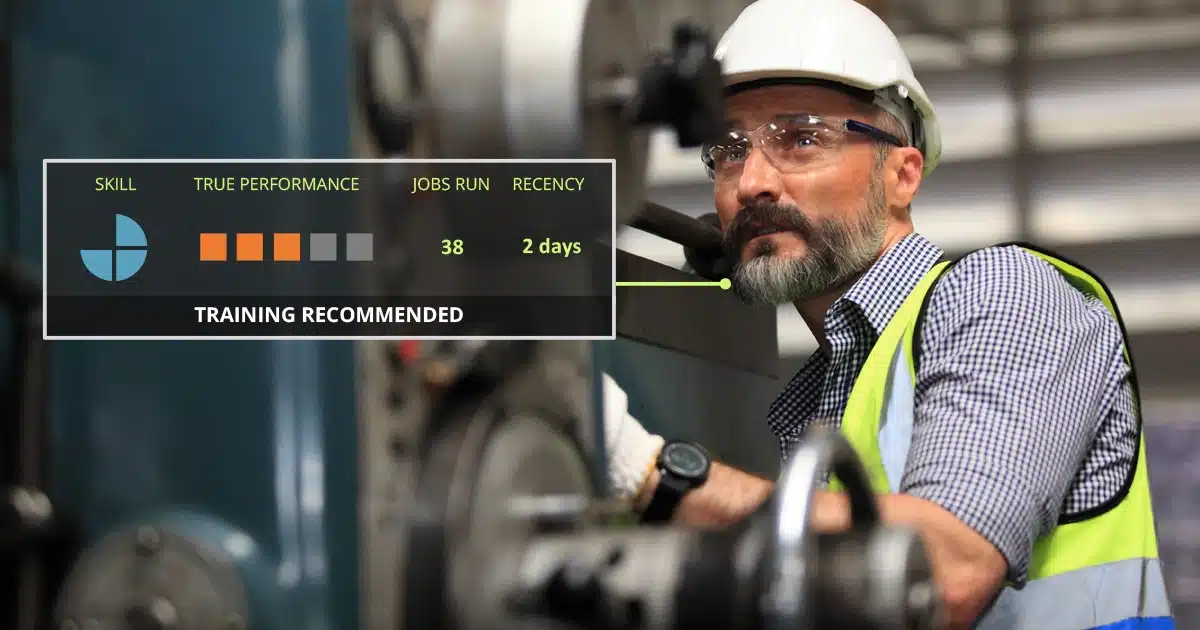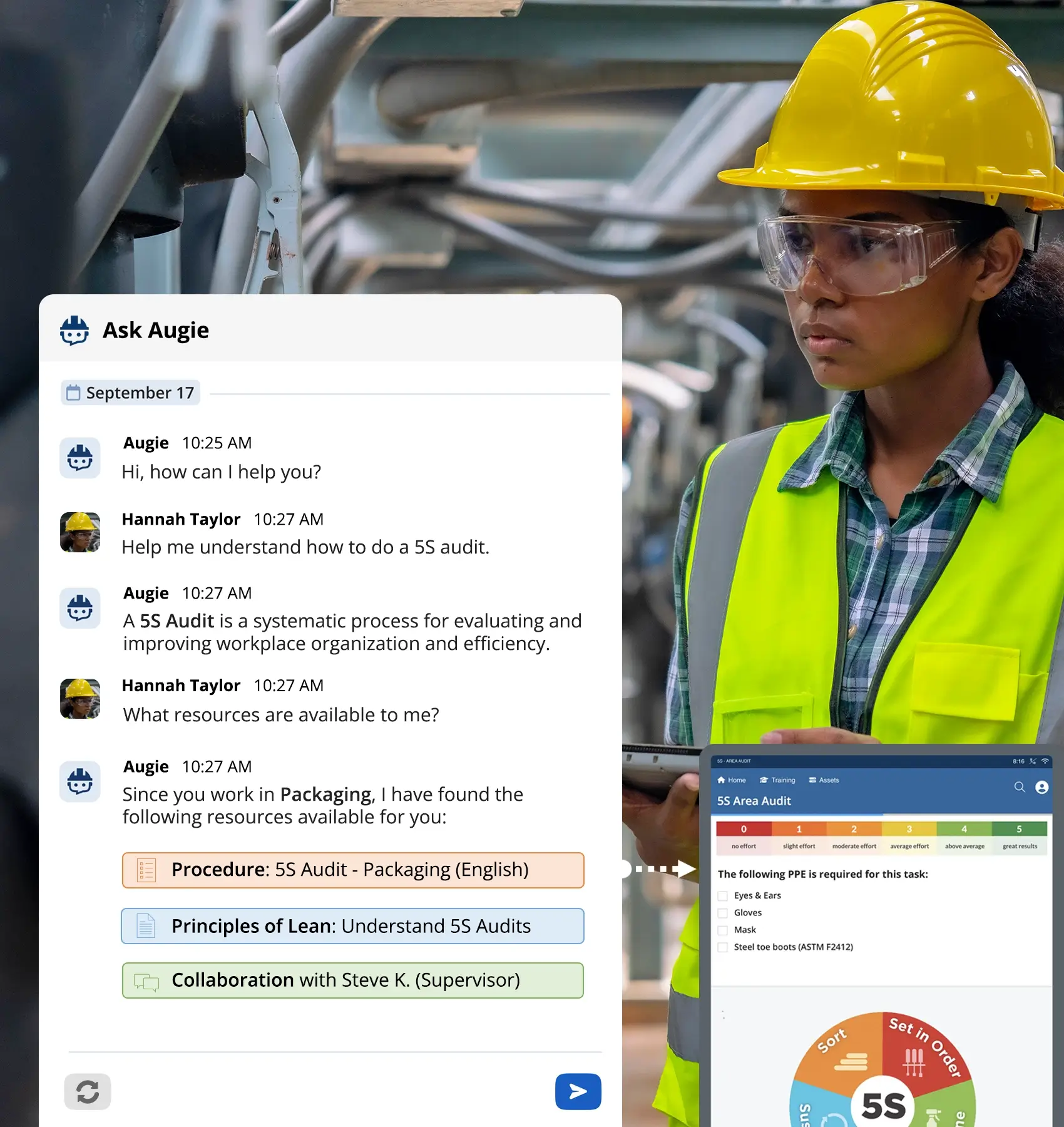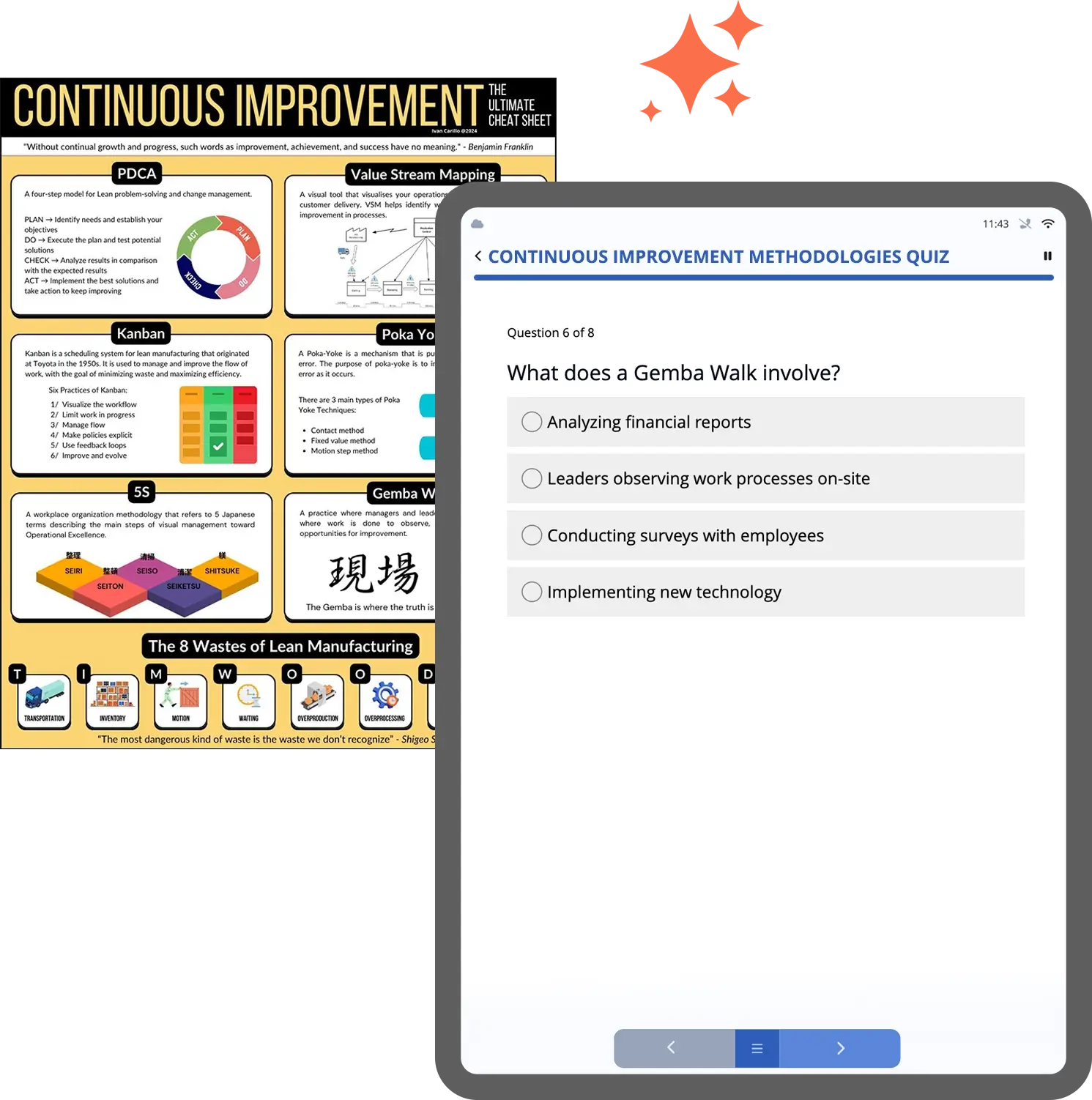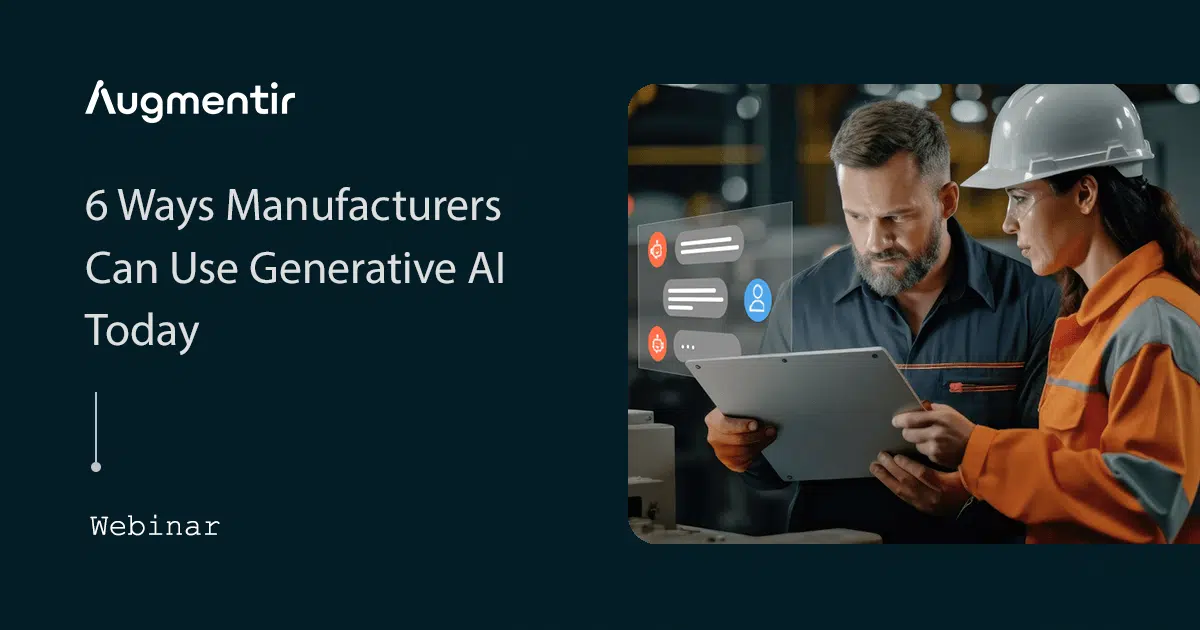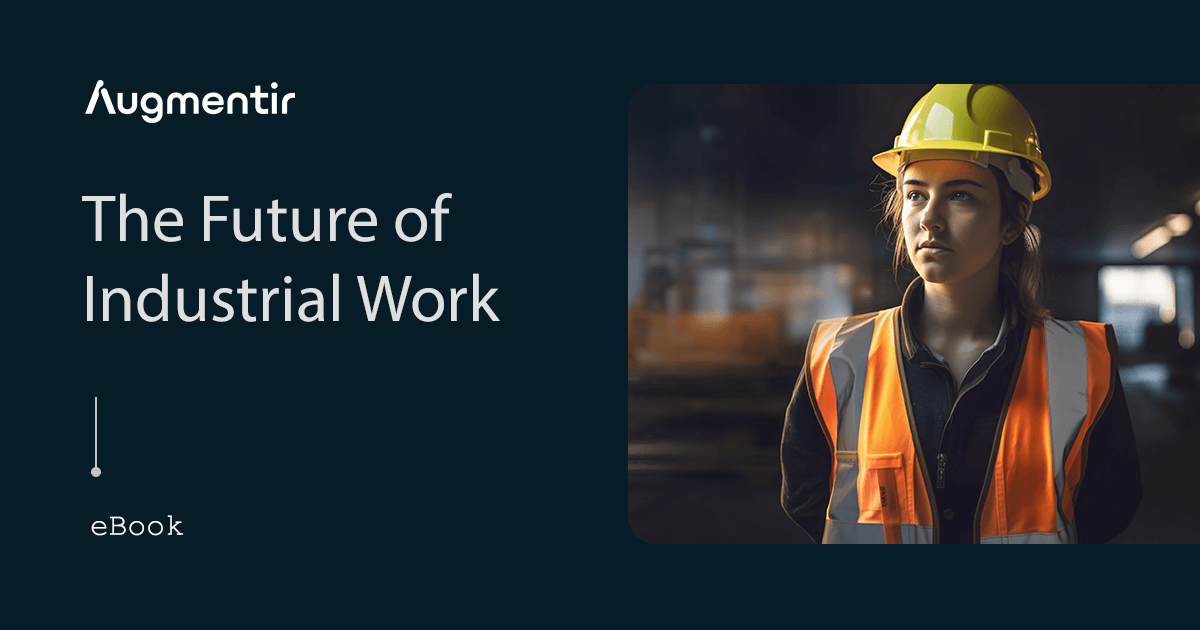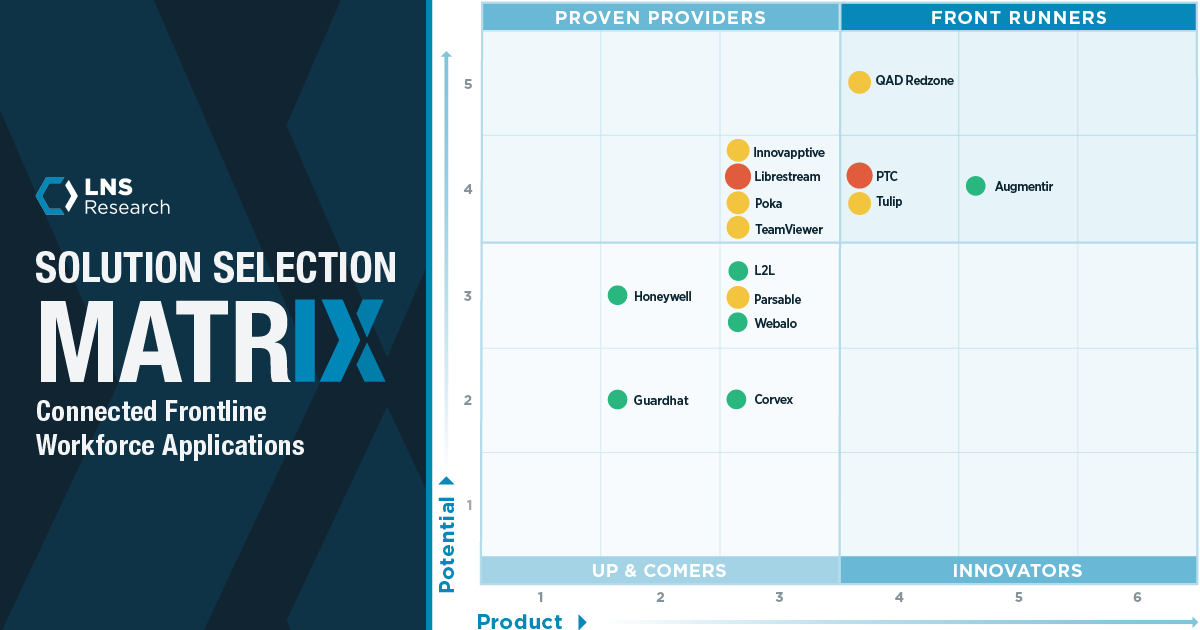Explore how Augmentir uses AI to personalize manufacturing training, boost performance, and deliver real-time support and content creation.
In today’s fast-paced manufacturing environment, staying competitive means more than just upgrading equipment—it requires investing in people. But traditional workforce training methods haven’t kept up. Static instruction manuals, one-size-fits-all onboarding programs, and outdated SOPs often fall short of preparing workers for the dynamic challenges of the modern factory floor.
Enter artificial intelligence (AI). From analyzing worker performance to delivering personalized training and real-time support, AI is transforming how manufacturers develop and empower their frontline workforce. Solutions like Augmentir are at the forefront of this shift, using advanced analytics, machine learning, and generative AI to create more effective, agile, and personalized training ecosystems.
Here’s how AI is reshaping manufacturing training across four critical areas.
1. Smarter Upskilling and Reskilling Through Performance Analytics
One of AI’s most valuable contributions to manufacturing training is its ability to turn raw performance data into actionable insight. Every worker interaction—how long a task takes, whether they need help, how often they make mistakes—tells a story. Traditionally, these insights were anecdotal at best. With AI, they’re measurable and immediately useful.
Platforms like Augmentir use AI to analyze real-time worker performance data and automatically surface trends and gaps. Suppose a maintenance technician consistently struggles with certain procedures. The system flags this, allowing supervisors to deliver targeted retraining or create a learning path that addresses the weak areas. Likewise, workers who consistently perform well might be fast-tracked for cross-training or more advanced roles.
This approach enables continuous learning and ongoing upskilling and reskilling, not just during onboarding or annual reviews, but every day. By matching training efforts with actual needs—based on data, not guesswork—companies can build more agile, responsive workforces that are always learning and improving.
2. Personalized Work Instructions for Every Skill Level
Manufacturing is not a one-size-fits-all environment—so why should training be?
AI can help tailor work instructions and learning experiences to the individual. With Augmentir, for example, AI dynamically adjusts work instructions and guidance based on a worker’s experience, proficiency, and even recent performance. This personalization helps new employees ramp up faster and allows seasoned workers to bypass unnecessary detail and focus on what matters most.
For a novice, instructions might include step-by-step visual aids, safety warnings, and prompts for supervisor sign-off. A veteran might receive a streamlined checklist with optional references. The experience becomes smoother and more relevant for each person, improving accuracy and reducing the time it takes to perform tasks.
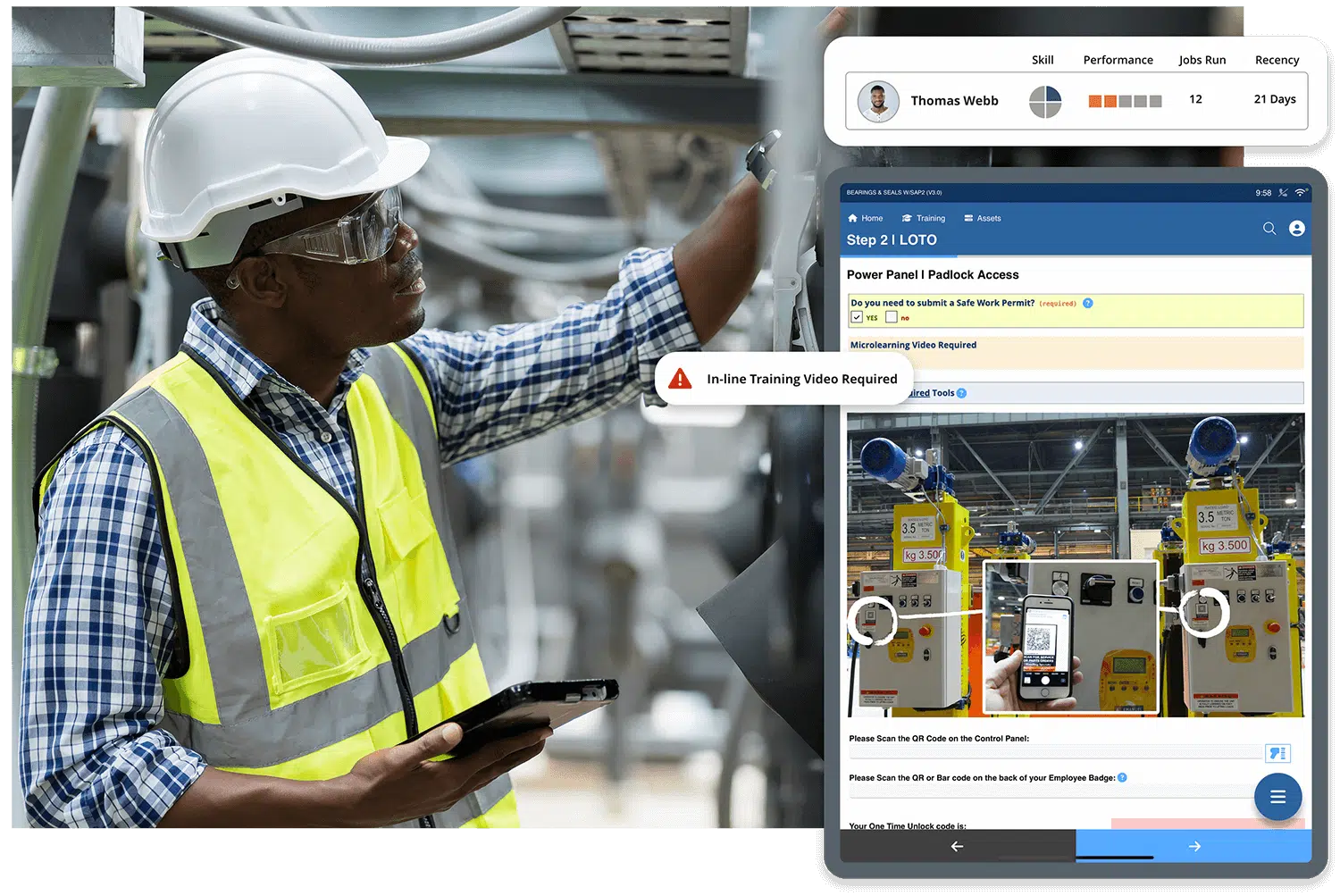
3. On-the-Job Support with Generative AI Factory Assistants
Even the best training can’t prepare workers for every situation they’ll encounter. That’s where generative AI assistants—often called copilots—come in.
Imagine a frontline operator faced with an unfamiliar error code on a CNC machine. Instead of stopping work, digging through documentation, or calling a supervisor, they can ask an AI assistant integrated into their work app or wearable device. The assistant quickly provides context-aware help: maybe it’s a diagnostic procedure, a video walkthrough, or a simple checklist.
This is not science fiction—it’s happening now. With tools like Augmentir’s Augie, workers get real-time guidance, support, and training while they work, tailored to the exact task and situation. These industrial generative AI assistants learn and improve with each interaction, so the more they’re used, the better they get at helping.
This not only boosts productivity but also reduces downtime, prevents errors, and improves worker confidence. AI copilots act like a mentor in your pocket—one that’s always available, always up to date, and always ready to help.
4. Rapid Content Creation with Generative AI Tools Like Augie
A major pain point in manufacturing training has always been content creation. Writing SOPs, training manuals, and onboarding documents is time-consuming, and keeping them current is a constant challenge—especially when processes, tools, or equipment change.
That’s where generative AI tools like Augmentir’s Augie come in.
Augie helps training teams and subject matter experts create up-to-date, accurate, and engaging content in a fraction of the time it used to take. You can input a few notes, a video walkthrough, or an old manual, and Augie will generate structured work instructions, training modules, or even interactive checklists. This democratizes content creation—now anyone from a line lead to a maintenance engineer can contribute training content without needing to be a technical writer.
More importantly, because Augie is part of the same ecosystem, the training content it generates can be immediately pushed into the hands of workers—embedded in digital workflows, accessible via AI assistants, or served up dynamically based on user behavior.
This means your training stays fresh, relevant, and aligned with the reality on the ground. No more outdated manuals. No more lag between process changes and training updates.
The Big Picture: AI as a Training Multiplier
What ties all these innovations together is a shift from static, one-time training to ongoing, personalized support—enabled by AI.
- AI makes training smarter by identifying who needs help and where.
- It makes training faster by delivering content that matches each worker’s needs.
- It makes training more effective by embedding it directly into the flow of work.
- And it makes training more scalable by automating content creation and support delivery.
In short, AI becomes a force multiplier for training. It empowers workers to get better faster, managers to lead more effectively, and companies to stay agile in a constantly changing world.
Looking Ahead
The manufacturing skills gap isn’t going away anytime soon. In fact, it’s projected that millions of manufacturing jobs could go unfilled over the next decade due to a shortage of trained workers. Traditional training methods simply can’t scale to meet this challenge.
But AI can.
By weaving intelligence into every layer of the training experience—from data analytics to real-time support—platforms like Augmentir offer a new blueprint for workforce development. It’s faster, smarter, more engaging, and ultimately, more human.
Because at the end of the day, it’s not about replacing people with AI—it’s about helping people thrive alongside it.

